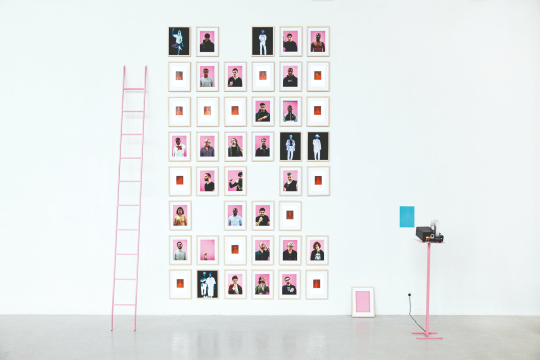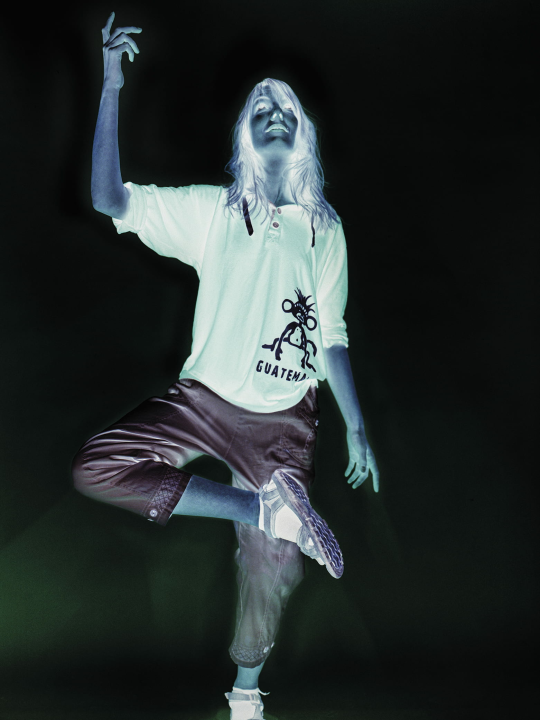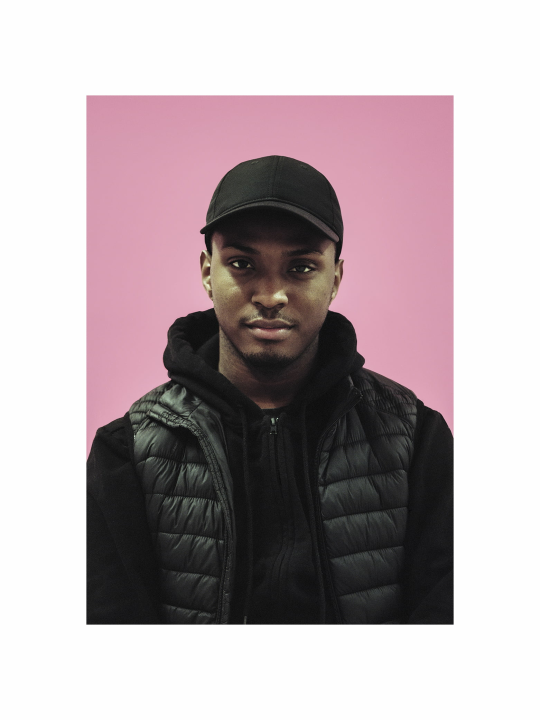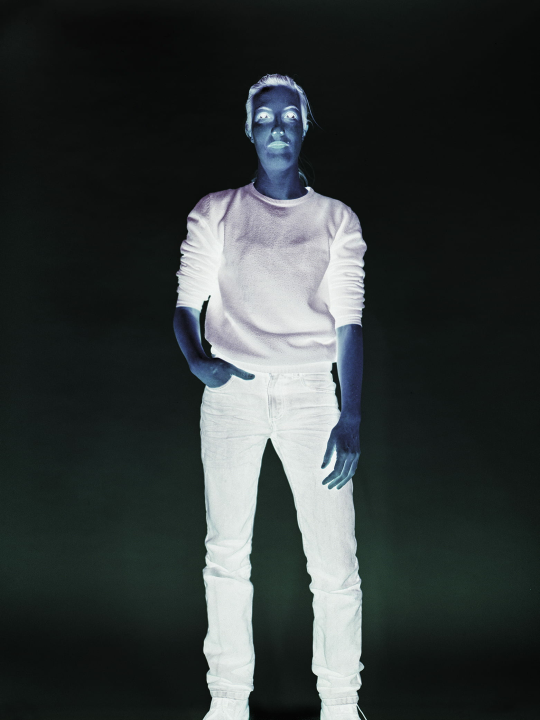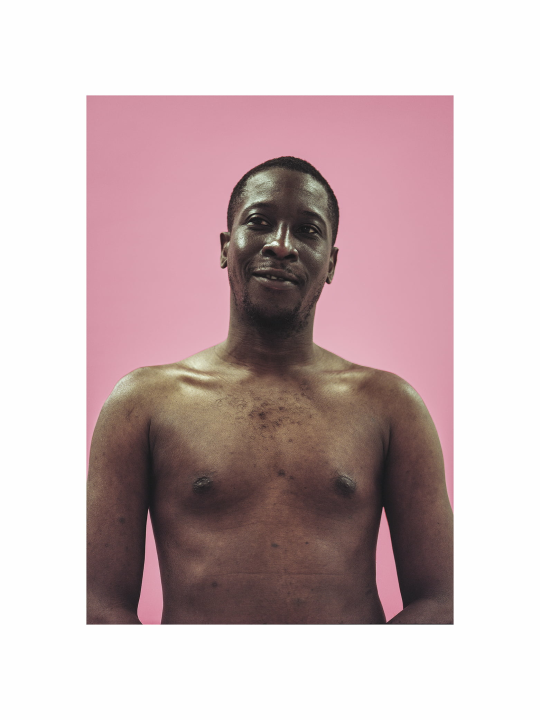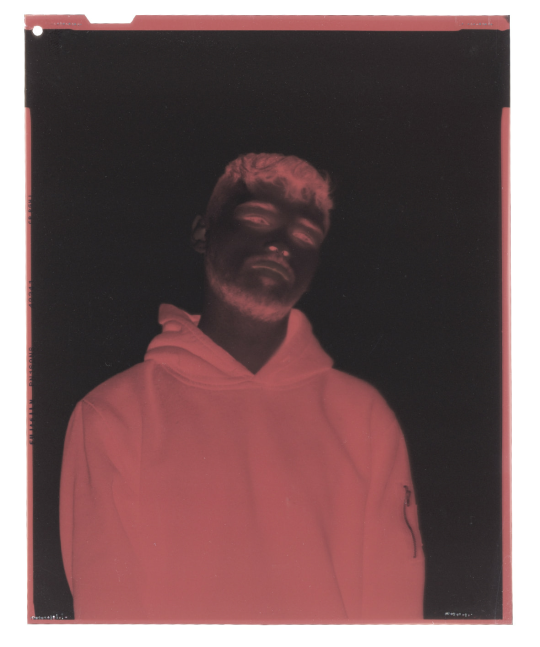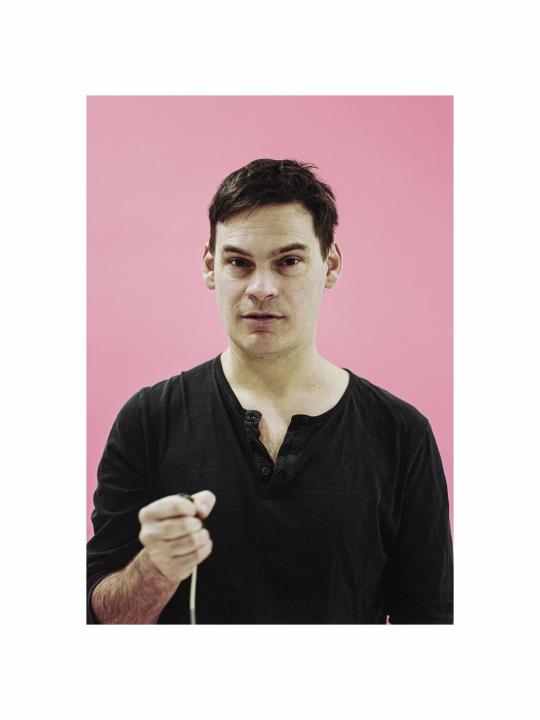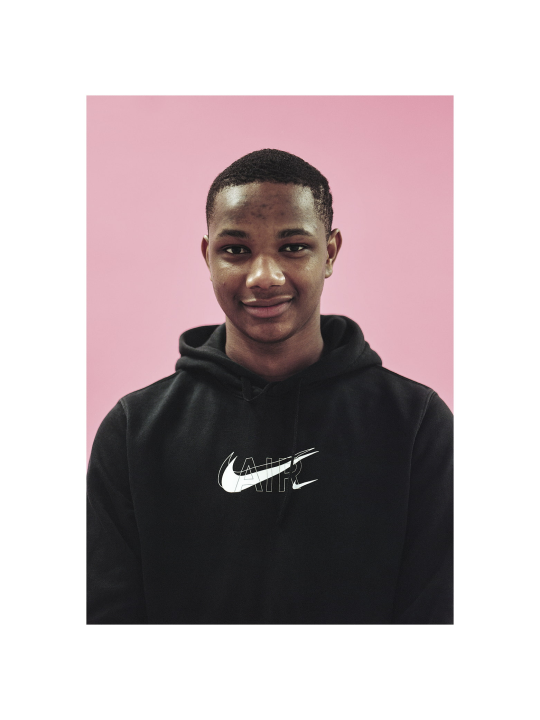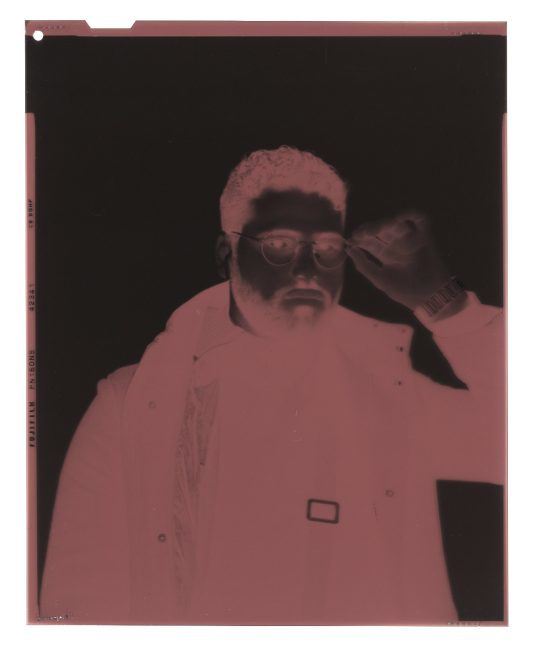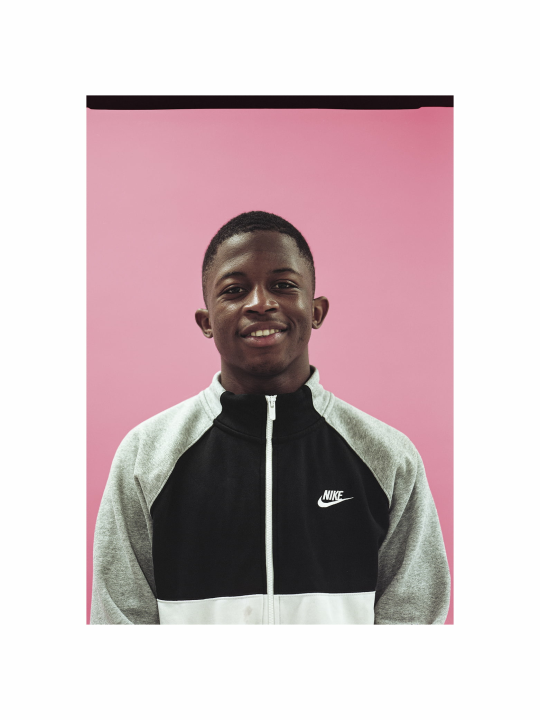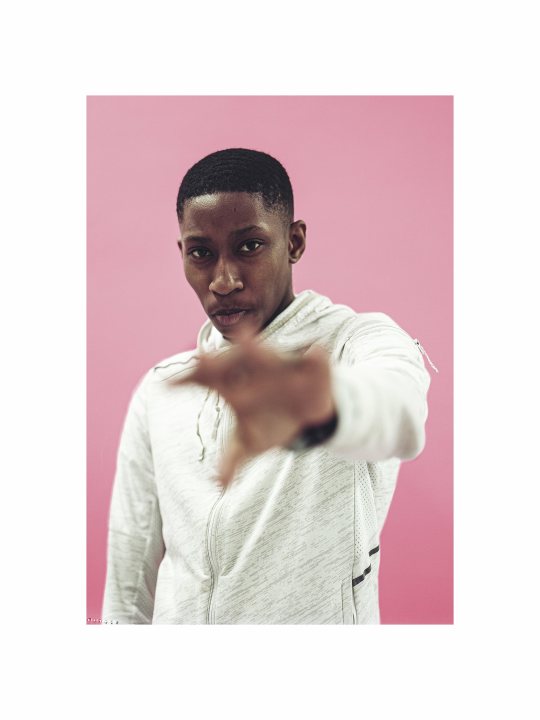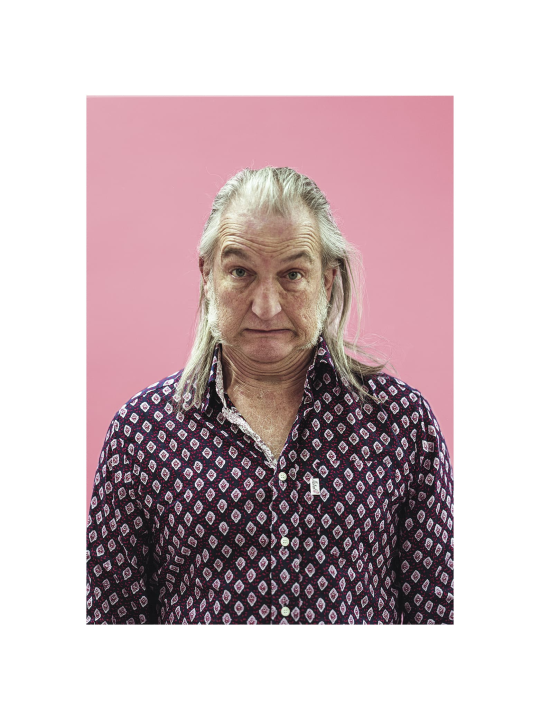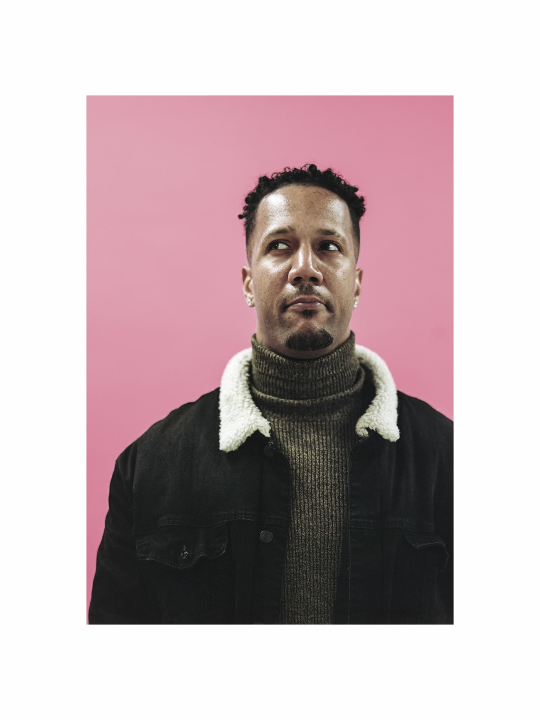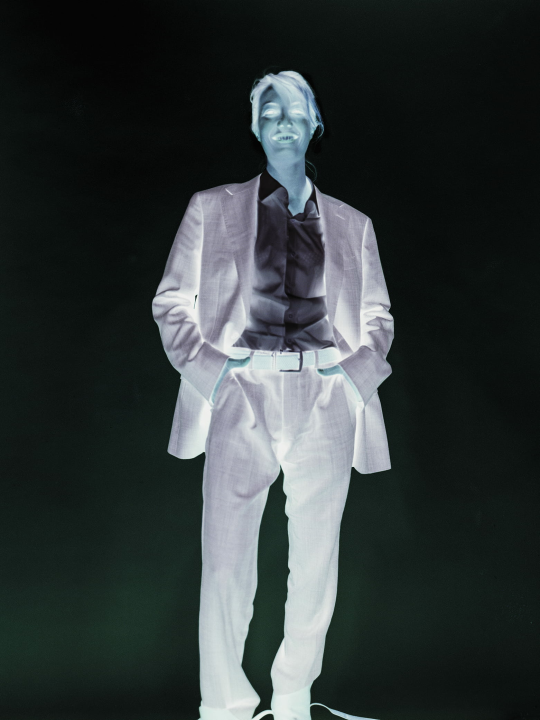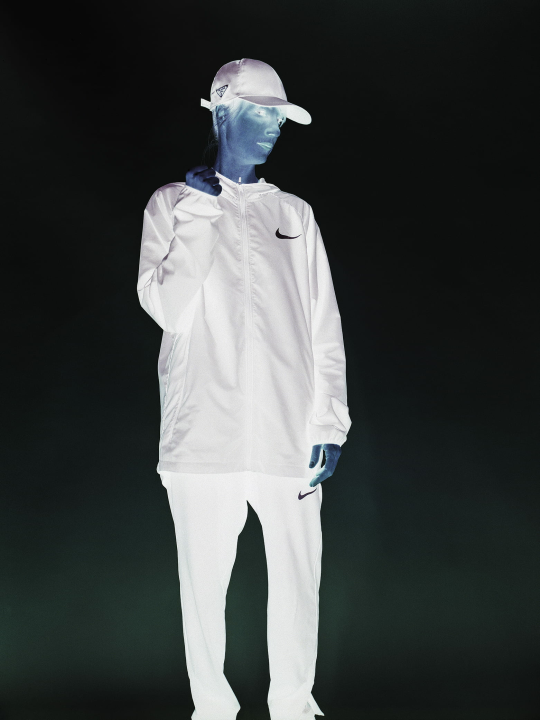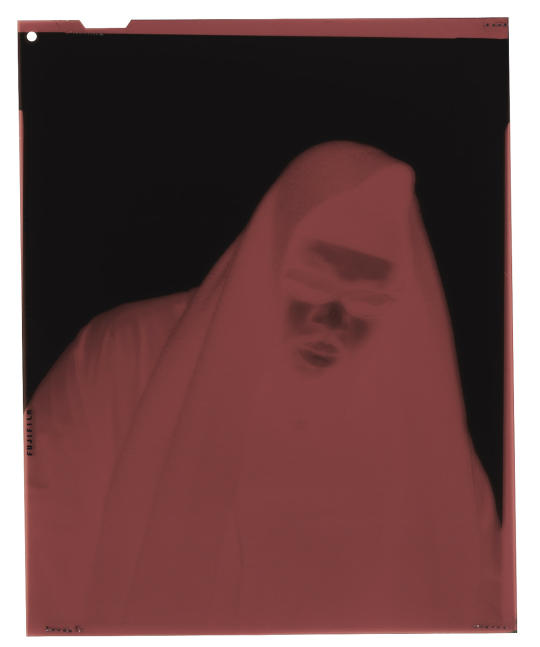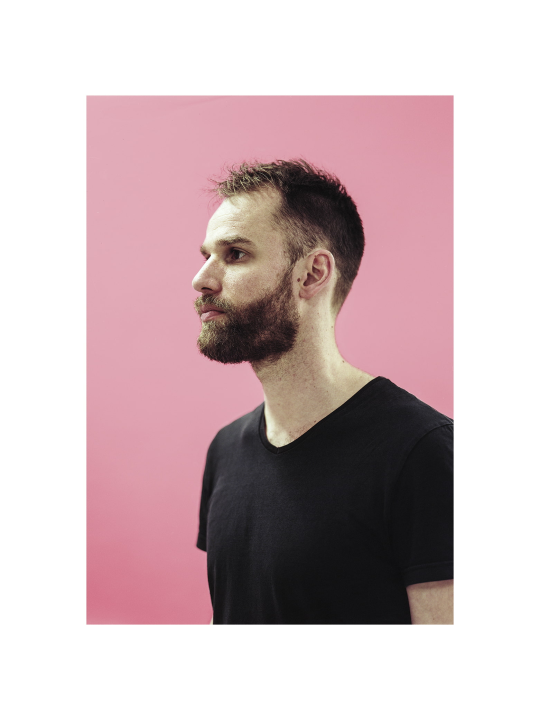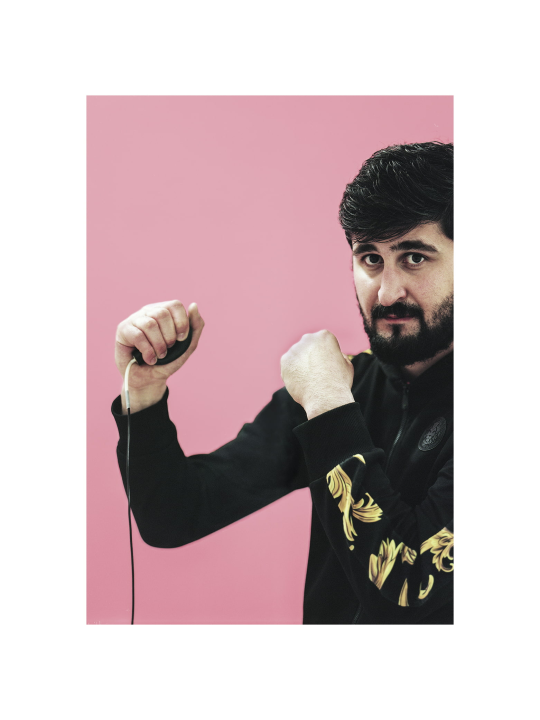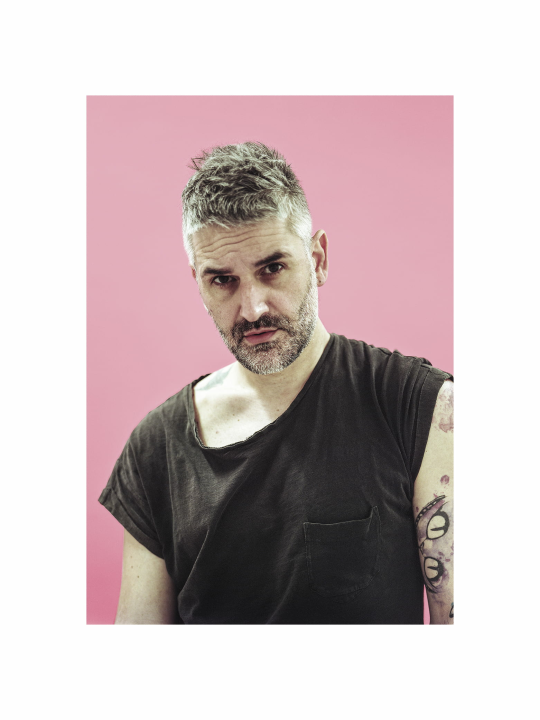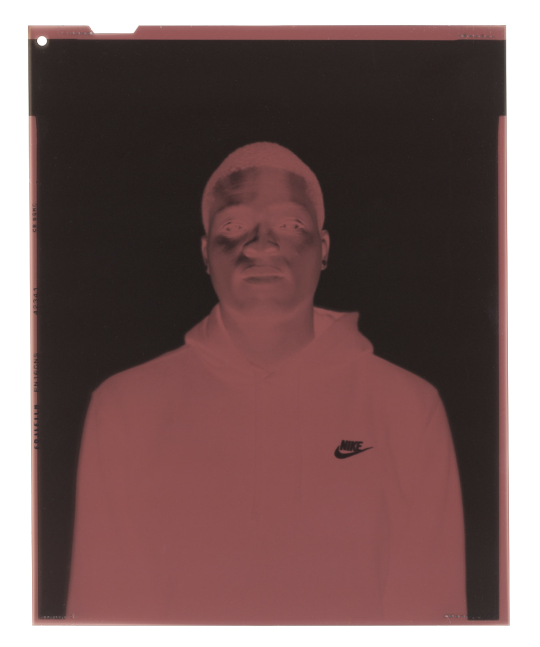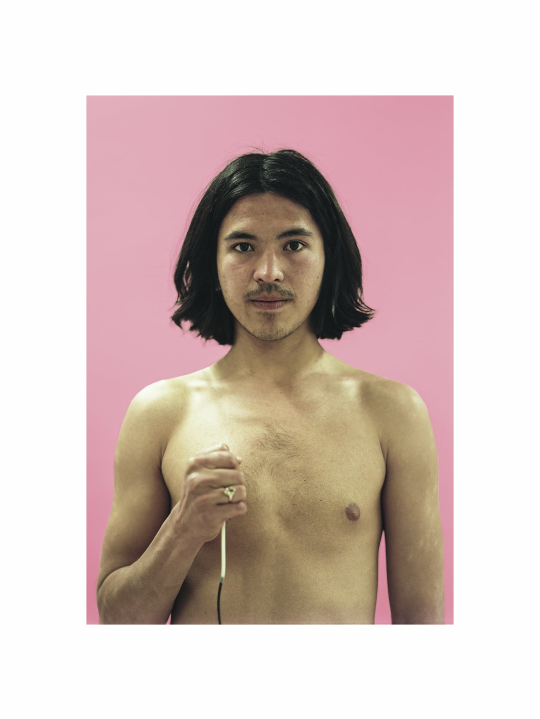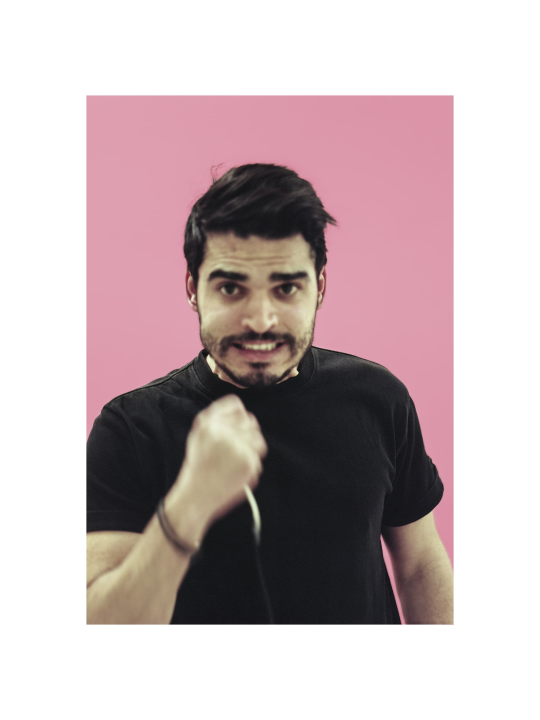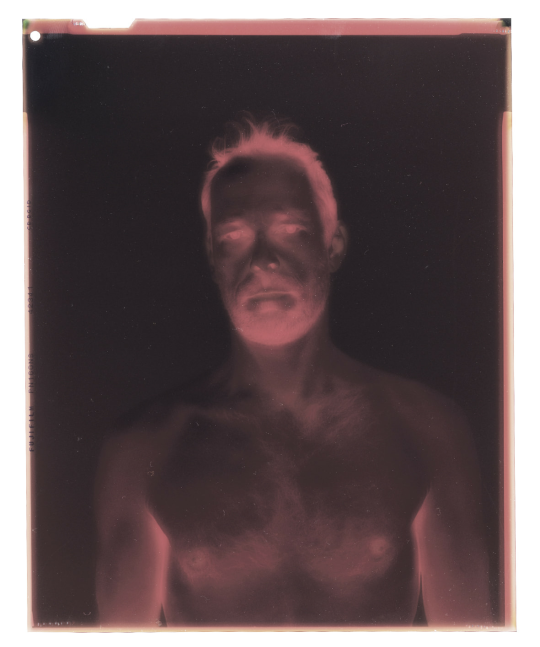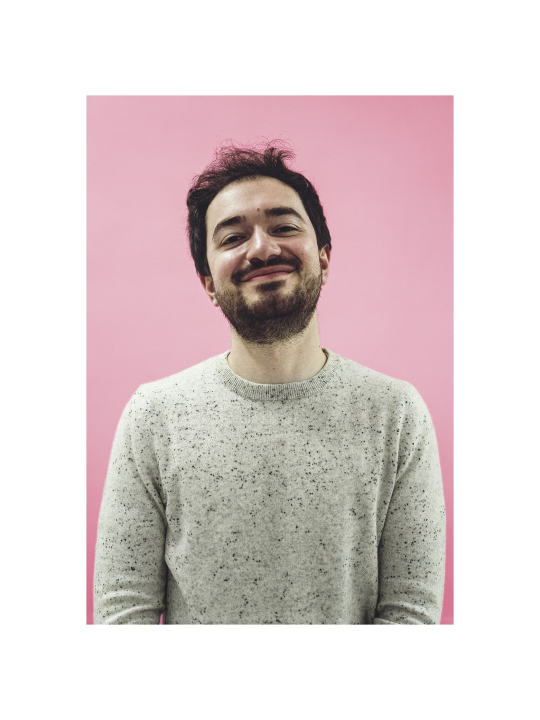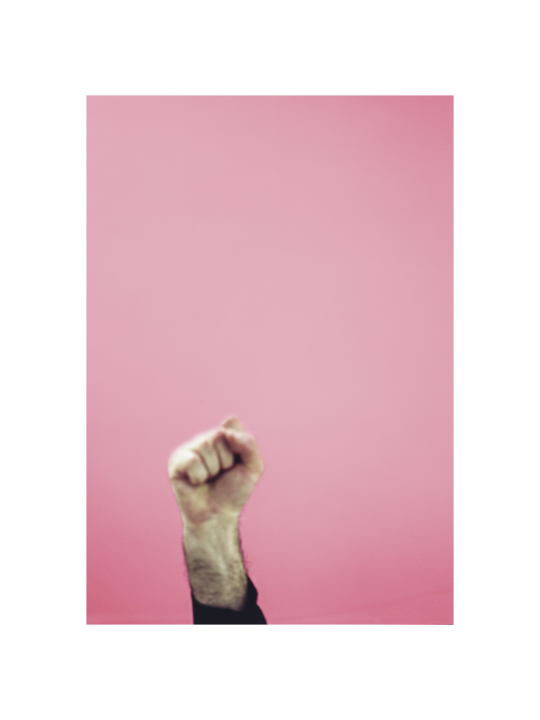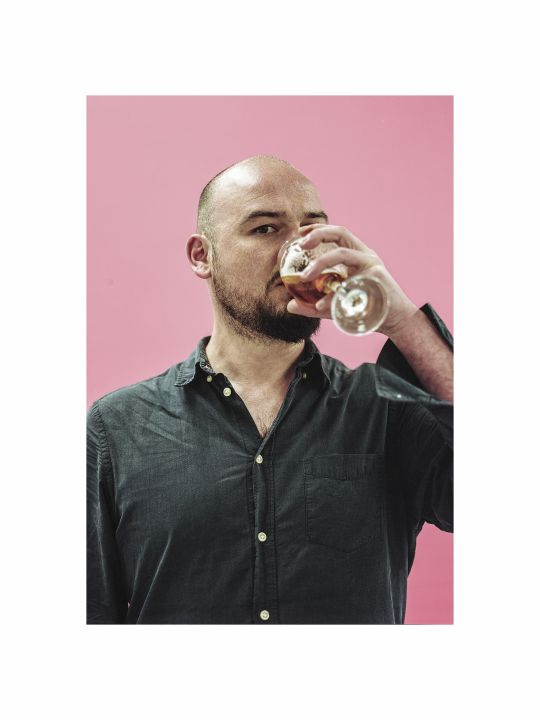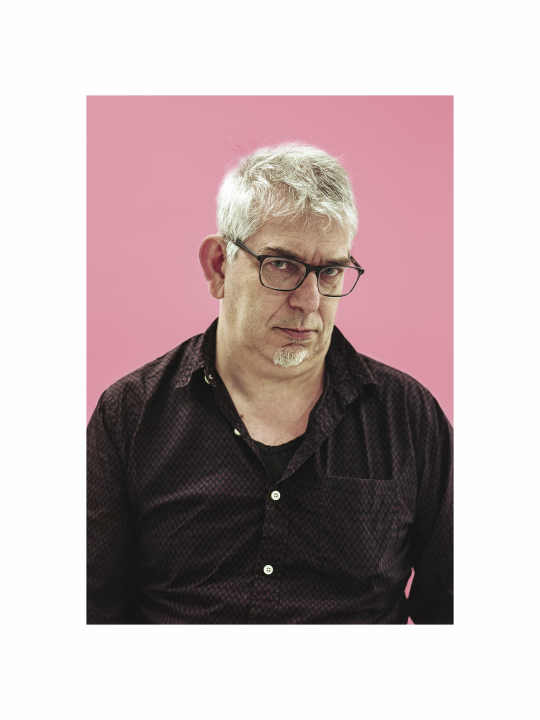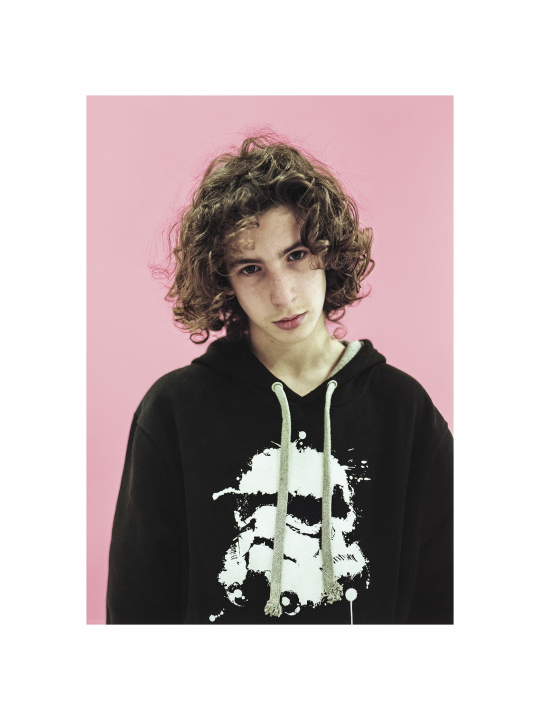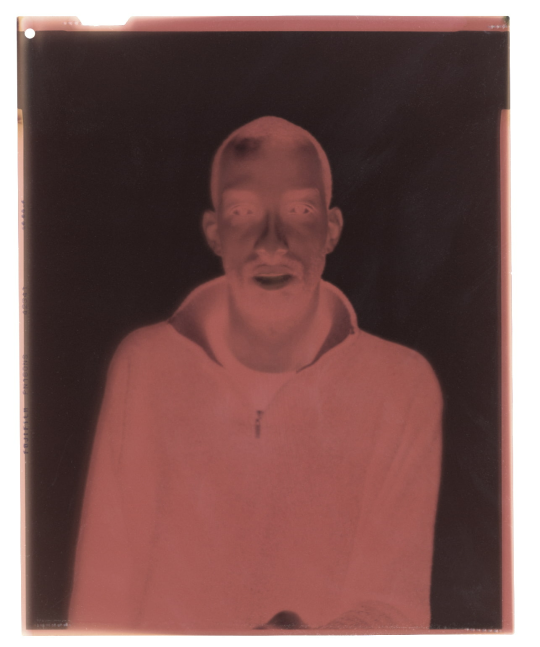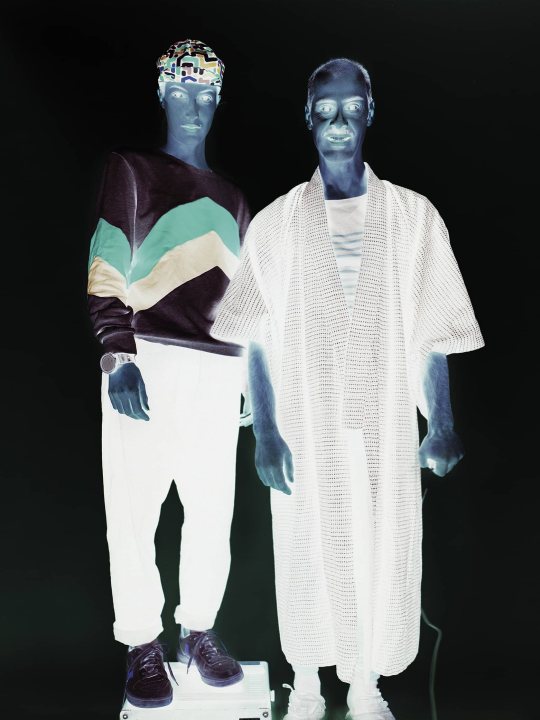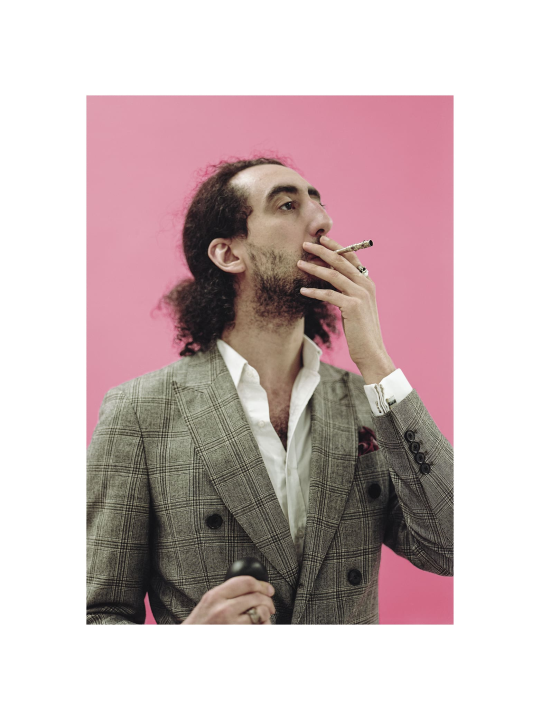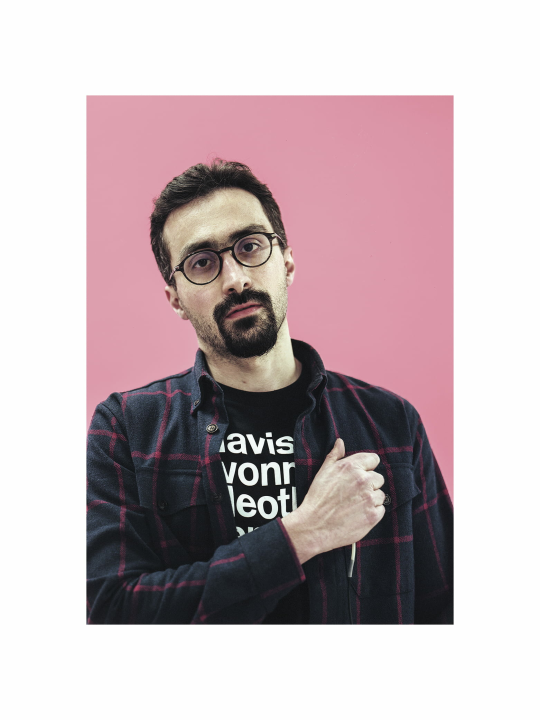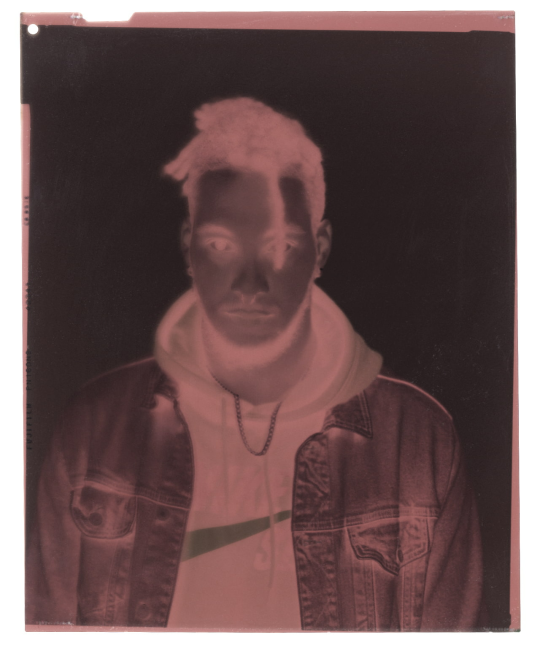Looking like a man
Photographing yourself as a man in front of a large format analog camera, this is the proposal made to the participants of the Pink Project.
When entering the studio, participants discover that the background in front of which they will take their self-portrait is pink. From this observation and following a defined protocol, they are free to accept, refuse or negotiate the constraint (by asking to change the color of the background or by photographing me in their men’s clothes). “Take your time and come get me when you’re done,” I say while leaving the room.
To each reaction corresponds a different type of display: if the participant declines the proposition = I frame a piece of the same pink background; if he asks for a replacement of the original color = I exhibit the film in a light box; when he chooses to exchange roles and clothes = the photo becomes wider and appears in inverted colors. Altogether, the grid of frames reveals the proportion of the different responses and visually answers the question “is pink a problem?”
The montage is presented chronologically – from top to bottom and from left to right – and shows all the participations as well as some empty spaces which materialize the unattended meetings. In total, there are thirteen color changes, four missed appointments, five role exchanges and twenty-six self-portraits on pink. No man refused to photograph himself.
In terms of alternative colors, red dominates and I was repeatedly told that pink is now “accepted “. When I got a little inquisitive and asked if it was really archaic to consider pink as a gendered and a priori “non-masculine” color, conversations started to flow. I was told, for example, that pink Adidas trainers only exist for women and that it is the same for all pastel colors; how a pink baby carriage inevitably provokes “she’s cute” although the child would be a boy; how at Romainville’s market they sell you pink or blue masks without asking which one you want, but wondering “girl or boy?”.
I would be lying if I said that pink caused discomfort. The wish to change the background color was often less a rejection than a desire to be unique, different from the others. Participants usually gladly accept the imposed rules, as if their participation already revealed an “unconditional” acceptance of the project’s steps and rules.
The Pink Project and the resulting grid of frames show the dialectical relationship between the camera and the subject. Working in film requires patience to get a result and this imposes a kind of seriousness from the participants who are very diligent in composing themselves (I can tell by the amount of time they spend alone in the room). The only time I walked in directly after hearing the shutter, without waiting for the participant to come to me, I caught a naked man.
I didn’t break the corridor waiting rule again.
